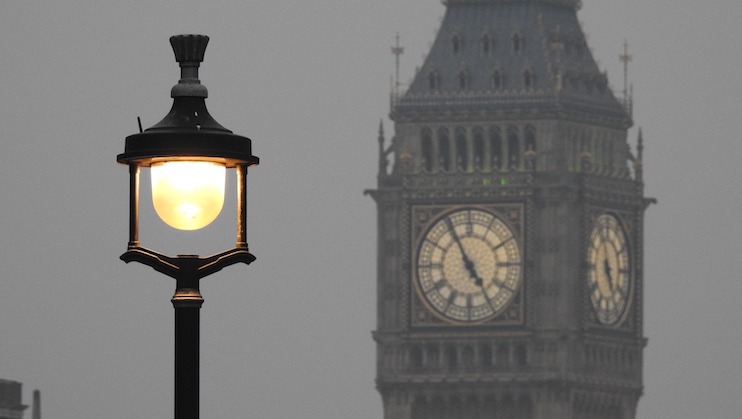London’s Hidden Secrets: a History of Lighting
London Calling is given a tour of London’s lighting history, organised by Peter Berthoud and Heal’s.

Lighting in London has more significance than you think. A fascinating history and numerous innovations led us to where we are today, and there are plenty of remnants of the past if you know where to look.
Christmas Lights
The Christmas lights on Oxford Street are always one of the centrepieces of the festive period. Up to 40 million shoppers descend on the famous street during the six-weeks from mid November to December and thousands turn up each year to see the lights turned on (last year Kylie had the honour of switching them on, on the rather early date of November 1st!) Oxford Street first displayed Christmas lights in 1959, although nearby Regent Street has had them since 1954, and the contract to actually provide the lights is a big prize to win. Most recently, 90 year old Portuguese company Castros Iluminações Festivas was behind the 1,778 decorative snowballs between Tottenham Court Road and Marble Arch.
Gas Lights
Gas streetlights first appeared in London in the early 19th century, introduced by inventor William Murdoch. They caught on quickly, and were found to have the dual benefit of making travelling easier at night and reducing crime rates. Believe it or not, there are still 1500 gas streetlights left in London. They are no longer lit every night, but instead maintained by a team of 5 ‘lamplighters’ from British Gas who take care of their timers and perform repairs. In fact, all the remaining lamps are listed by English Heritage, so it’s of upmost importance that they are kept in good condition. But the most interesting lamp remaining from Victorian London is the final ‘Webb Patent Gar Sewer Lamp’ located behind the Savoy Hotel. Ingeniously invented to burn off the methane from the sewer that ran along Embankment, this lamp stays lit 24/7 and runs off waste!
Electric Lights
The electric light bulb is often credited as the invention of American Thomas Edison, but although he patented the design in 1879, the first successful use was by the Brit Joseph Swan in 1878. He founded The Swan Electric Light Company, and the Savoy Theatre was the first public building he lit entirely by electricity. Theatregoers previously had to put up with the smell and heat of gas lamps during a performance, so the electric lights did absolute wonders for business. The Savoy made so much profit; it was able to build the Savoy Hotel around the theatre! Other theatres caught on, notably the nearby Adelphi Theatre, owned by the entrepreneurial Gatti family. The family set up the Charing Cross Electricity Supply Company to light the theatre, plus the other restaurants and music halls they owned, and made evenings out a far more pleasant experience.
Neon Lights
Electric lighting just kept getting more exciting into the 20th century, none more so than the neon lighting that symbolised the seediness of Soho. Of course, it’s now mainly just the favourite subject for Instagrammers. Some of the most notable lights are now actually fronts for very legitimate places, such as the notorious ‘Adult Video’ and ‘Peep Show’ lights that form the front of classy Mexican restaurant La Bodega Negra on Old Compton Street. Soho now even hosts the first light art gallery, with Lights of Soho on Brewer Street, which is currently presenting the exhibition God’s Own Junkyard about neon artist Chris Bracey.
Designer Lights
London lighting is now a mix of the old and new, with designer and eco friendly lighting adding to the history. James Glancy Design is known for creating some of the most innovative lights in London, often working around iconic historical location with designs in Leicester Square, St Christopher’s Place and Carnaby Street. Department store Heal’s unveiled an impressive chandelier during London Design Festival in 2014, which formed a new centrepiece to the art deco Cecil Brewer staircase from 1916. Even our humble street lamps are being updated to become smarter, with stylish looking LED street lamps set to replace 35,000 of the capital’s street lamps this year, reducing their energy consumption by up to 40%.
You can find out more about the history of lighting on the Heal’s website. Many thanks to Peter Berthoud and Heal’s for arranging the tour.